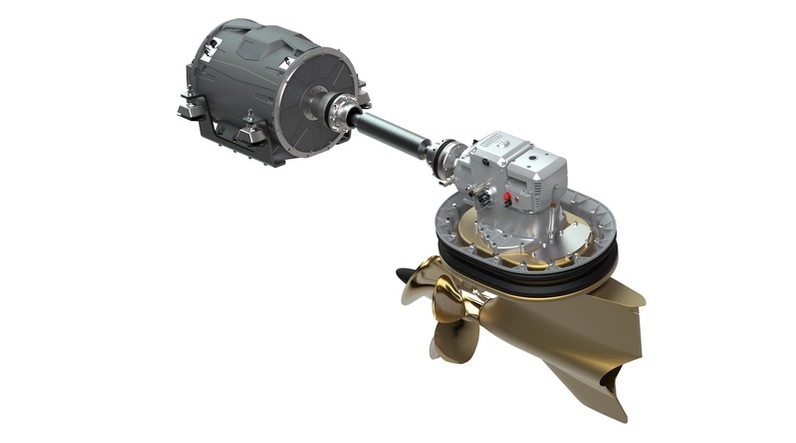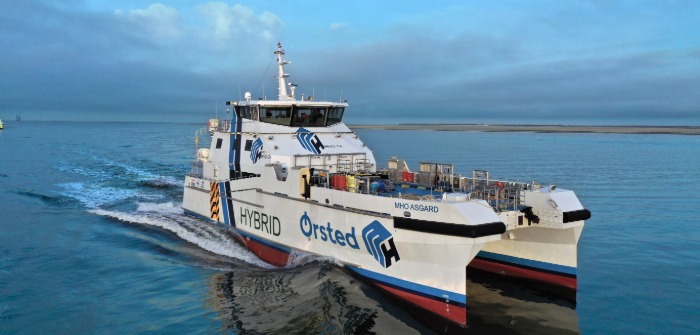Wind farm transfer company MHO-Co is to help meet sustainable transportation demands following the recent delivery of two hybrid electric crew transfer vessels (CTVs). An announcement at the recent COP26 revealed that £160m (US$214m) of funding will be given to support the construction of floating offshore wind farms in Scotland and Wales.
The MHO Asgard and the MHO Apollo CTVs feature Volvo Penta and Danfoss Editron technology and will service Ørsted’s Hornsea Project 2 offshore wind farm in the North Sea by transporting workers and supplies.
“Cross-industry collaboration is needed now more than ever to take steps toward mitigating the negative impacts of climate change,” said Peter Granqvist, chief technology officer at Volvo Penta. “By working together, we’ve been able to begin to make real change with impressive fuel and emissions savings as well as more flexible operation for our customers.”
Both CTVs feature Volvo Penta’s Inboard Performance System (IPS), which is already having a positive environmental impact. With the IPS having already delivered up to 30% reduced emissions with combustion engines – compared with traditional inboard shaft installations – the hybrid system can now deliver an additional fuel saving of 20.89%. CO2 emissions can also be reduced by 20.96% compared with the already efficient Volvo Penta IPS vessels in MHO-Co’s fleet.
The hybrid vessels also benefit from multiple power systems onboard, which Volva Penta refers to as the ‘power of plenty’.
“This new system gives us more flexibility and allows us to switch between engines and do maintenance when it fits our schedule, without affecting the service to our customers,” explained Mik Henriksen, CEO of MHO-Co. “We are also able to use just one small engine when idling in the wind park, offering significant fuel saving and noise advantage when in waiting position. I think we have the best system possible with the technology that exists today.”
The vessels have been in operation for over a month, with 330 engine hours logged between the pair already. One-thousand hours of run time were previously completed on the vessels’ maiden voyages from China to the North Sea.
Through the collaboration, Danfoss Editron and Volvo Penta have enabled the vessels to operate in a zero-emissions electric mode for up to eight hours. When combined with fuel propulsion, the CTVs can reach a maximum speed of approximately 24kts.
“In these hybrid crew transfer vessels, we are addressing marine electrified propulsion with one total system solution,” said Granqvist.




